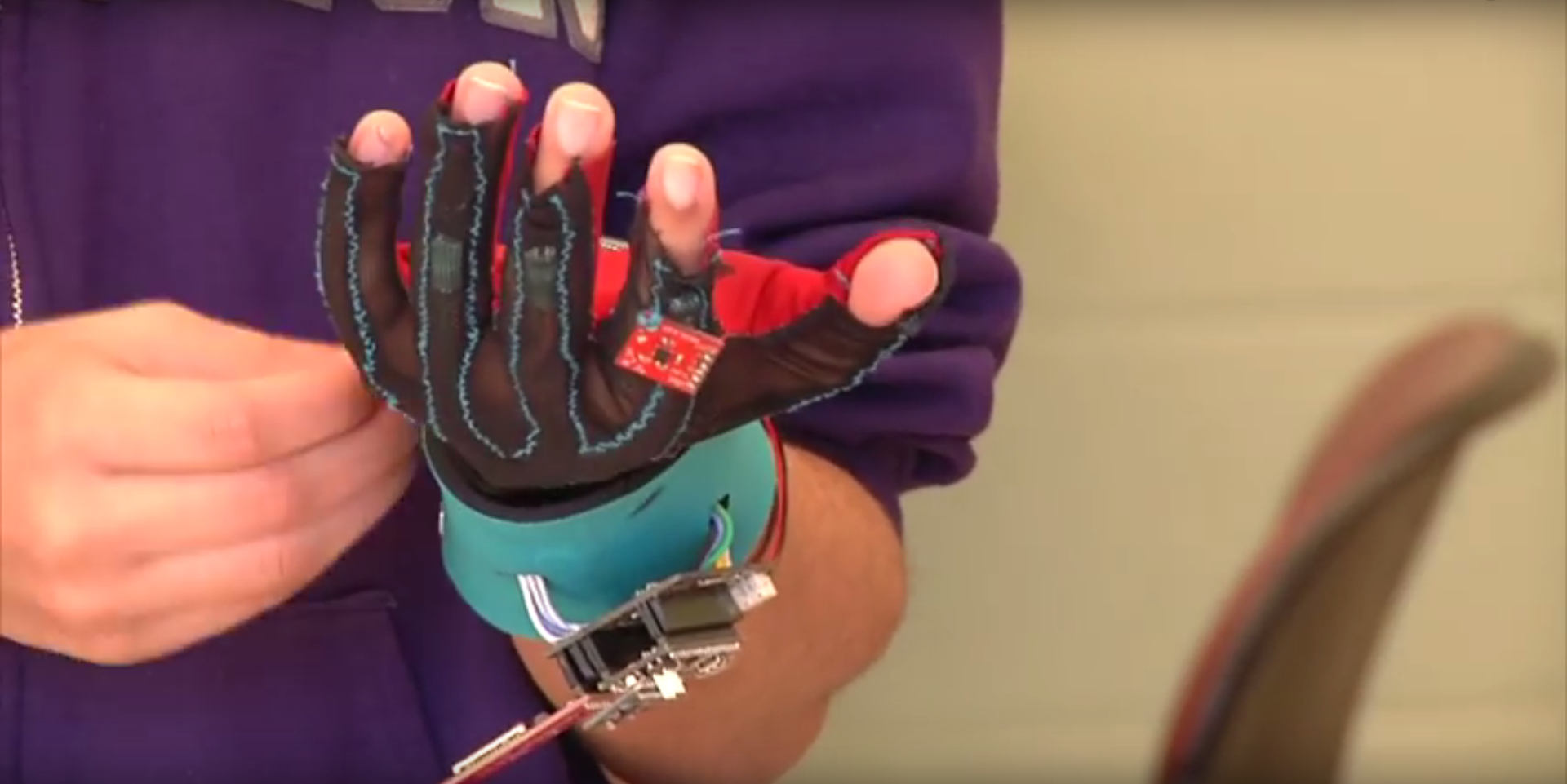How technology is helping the deaf and hard of hearing
From smart gloves to Uber, technology is helping deaf and hard of hearing people to better communicate with the rest of the world


Two students from the University of Washington have invented gloves with the capability to translate American Sign Language (ASL) into speech in real time.
The sensors in the gloves will allow a deaf or hard of hearing person to transmit hand and wrist movements made through ASL via Bluetooth to a computer program created by student Thomas Pryor, reports Buzzfeed. The program then translates this into speech in real-time.
Despite apparently building the prototype on a budget of just $100, Pryor and his partner, Navid Azodi, have been awarded $10-15,000 in funding from the Lemelson-MIT Student Prize.
"Access to communication is a basic, fundamental human right, and every single person deserves to be a part of a global community," said Azodi in a demonstration video. "However, those who are deaf or mute communicate differently than everyone else. They primarily use sign language, while the rest of the world communicates verbally. This puts the deaf-mute community at a disadvantage.
"We wanted to create something that would help the deaf and mute better communicate with the rest of the world, without changing how they already interact with each other."
Uber has recently made it easier for its deaf drivers to communicate with passengers, with the company working with the Communication Service for the Deaf (CSD) to create online Uber video support guides in ASL, host sign-up events for the deaf community across the US, and partner with the CSD ASL-based customer experience team once drivers get started.
"Uber has incorporated accessible technology for Deaf and hard of hearing people directly into their app, providing unprecedented access for the Deaf community to make money by driving with Uber," said Chris Soukup, CEO of CSD. "This partnership with CSD will provide more than a simple opportunity for Deaf driver-partners to give rides to people on the road it's an opportunity to build bridges between people and influence a new perception of the abilities and humanity of Deaf people."
Get the ITPro daily newsletter
Sign up today and you will receive a free copy of our Future Focus 2025 report - the leading guidance on AI, cybersecurity and other IT challenges as per 700+ senior executives
Identifying themselves as deaf or hard of hearing will enable drivers certain features in the Uber app, including flashing trip request instead of audio, text-only communication with riders, and notifications for riders that their driver is deaf or hard of hearing.
This week, the Federal Communications Commission (FCC) in the US also approved the proposal to switch from TTY typewriter devices to real-time text technology, helping deaf and hard of hearing people to communicate.
A Notice of Proposed Rulemaking was also passed by the FCC, seeking comment on proposals to support real-time text communications over Internet Protocol (IP) communications networks to improve accessibility.
Gallaudet University and communication research firm, the Technology Access Program (TAP), teamed up to encourage the FCC to make the transition, which allows people with disabilities to communicate via a flowing text conversation with recipients able to see text as it is being typed, allowing them to interrupt each other.
Dr Christian Vogler, TAP director, said: "Imagine a world where people who are deaf or hard of hearing have the option of calling any other person's phone directly via real-time text, or using a mix of real-time text and voice. This would do wonders for our integration into mainstream communications.
"This represents the culmination of decades of hard work by deaf and hard of hearing stakeholders, with TAP and its partners involved front and centre, and opens up many exciting new avenues for communication access."
"Within the deaf community, text-based messaging online and on cell phones are very popular forms of communication," added Norman Williams, TAP senior research engineer. "Real-time text is a welcome addition because it is better suited to time-sensitive interactive communication and mimics the conversational nature of the telephone. With real-time text, you don't need to wait for your colleague or friend to finish their typed message; you can read it as they are writing."
Caroline has been writing about technology for more than a decade, switching between consumer smart home news and reviews and in-depth B2B industry coverage. In addition to her work for IT Pro and Cloud Pro, she has contributed to a number of titles including Expert Reviews, TechRadar, The Week and many more. She is currently the smart home editor across Future Publishing's homes titles.
You can get in touch with Caroline via email at caroline.preece@futurenet.com.
-
 Meta just revived plans to train AI models using European user data
Meta just revived plans to train AI models using European user dataNews Meta has confirmed plans to train AI models using European users’ public content and conversations with its Meta AI chatbot.
By Nicole Kobie
-
 AI is helping bad bots take over the internet
AI is helping bad bots take over the internetNews Automated bot traffic has surpassed human activity for the first time in a decade, according to Imperva
By Bobby Hellard